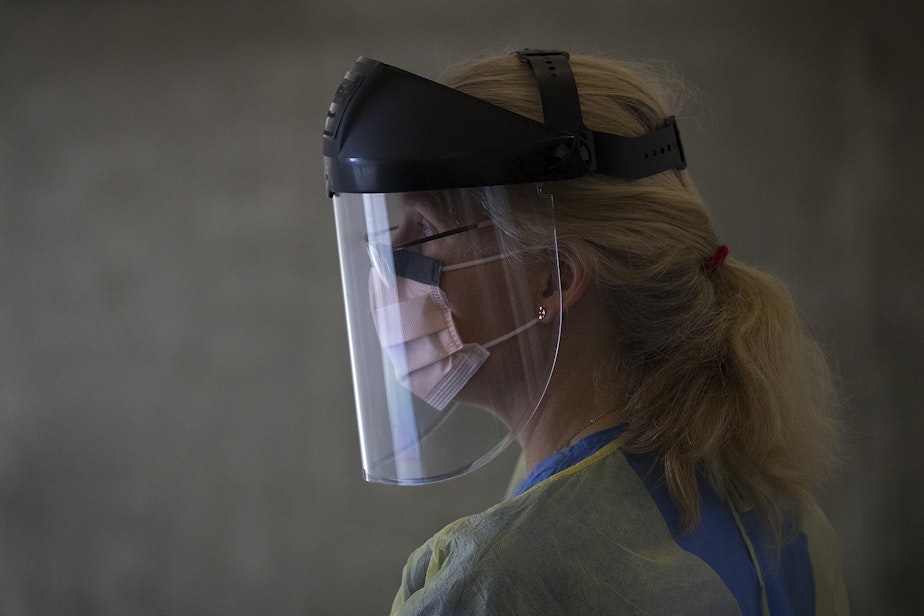Some good news (if we can call it that) amid the ongoing pandemic

There are a few bits of good news this week, amid the coronavirus pandemic in Washington state.
KUOW’s Anna Boiko-Weyrauch attended a briefing from state health officials. She shares what she learned.
This interview has been edited for clarity.
Anna, what are health officials saying is good news?
Anna Boiko-Weyrauch: I’m just going to be a bummer up front, and say "good news" about a pandemic means there’s still a pandemic.
Covid-19 is still on the loose, it’s not under control, and the number of people dying in the state is still inching up every day. There are still more cases every day than there were during the first wave of the pandemic in Washington state this spring.
The good news is it looks like Washington state is on the downswing from a big peak of cases in mid-July. If the graph of our cases this summer looked like a big hike up a mountain, now it looks like we’re coming down. We’re on the other side, losing elevation.
Another bright spot in the data is the number of people hospitalized with symptoms that look like Covid-19. That curve is going down, too. Fewer and fewer people are going to the ER with what appears to be Covid. There are fewer people now compared to earlier this summer, and there are way fewer people compared to the peak back in March.
Sponsored
What is causing the decrease in case numbers?
That’s a little tricky to parse out, because the number of people getting tested has also gone down at the same time that cases have gone down. Washington state health officer Dr. Kathy Lofy was walking reporters through a bunch of different graphs this afternoon. She weighed a couple of possibilities:
“There could be less disease out there, and therefore fewer people getting tested and fewer people testing positive, but there’s always the chance that something else is driving down the testing, and then as a result we’re seeing fewer positives.”
But, she and other officials are inclined to say the reason there are fewer cases is because there is less disease circulating. They point to the data I mentioned before that show the declines in data on people going to the ERs with Covid-like symptoms.
We heard earlier that it was young people getting sick, is that still the case?
Well, it actually looks like it’s spread from mostly young people to older people now. When we had this second wave this summer, we saw a lot more cases in people under 40 going to the hospital. But, their cases flattened out around mid-July. At the same time, more people over 40 have been getting really sick.
What else did you learn today from health officials?
Do you remember how at the beginning of the pandemic we heard a lot about healthcare workers having to reuse N95 masks, and that there wasn’t enough protective gear? This week, the state kicked off a new group to look at the supply chain, and figure out how the state is going to stockpile protective gear. They’re going to look at a lot of things, but they want to make sure there’s enough PPE so healthcare workers don’t have to reuse masks, or clean them by hand going forward.
Listen to the interview by clicking the play button above.


